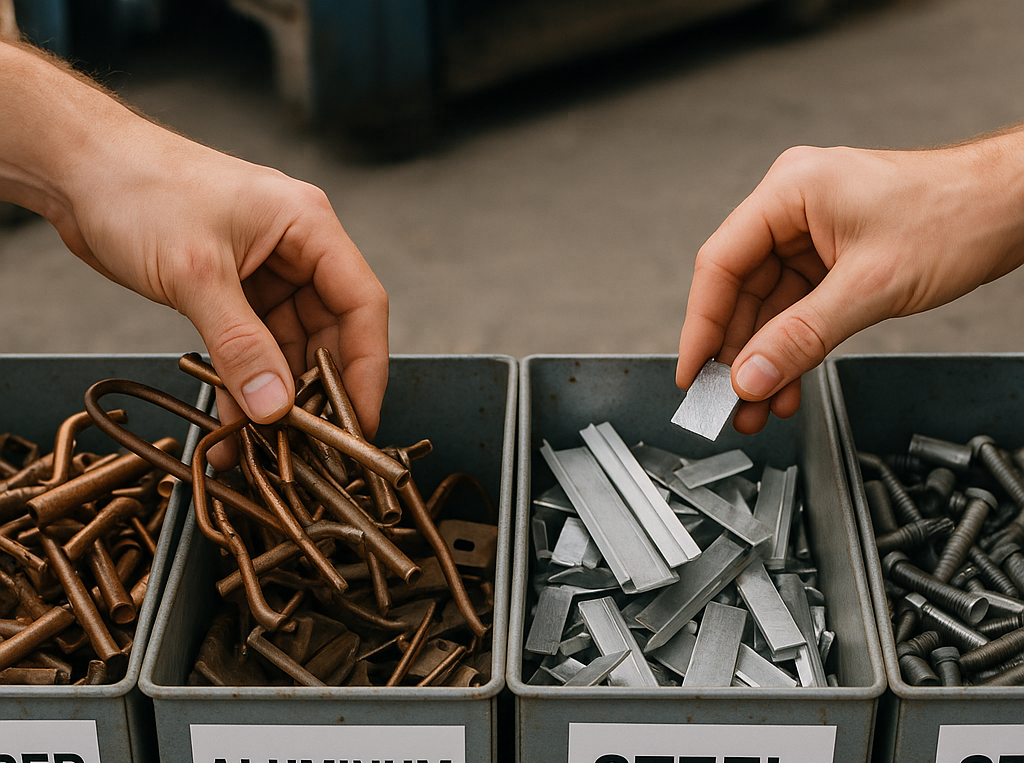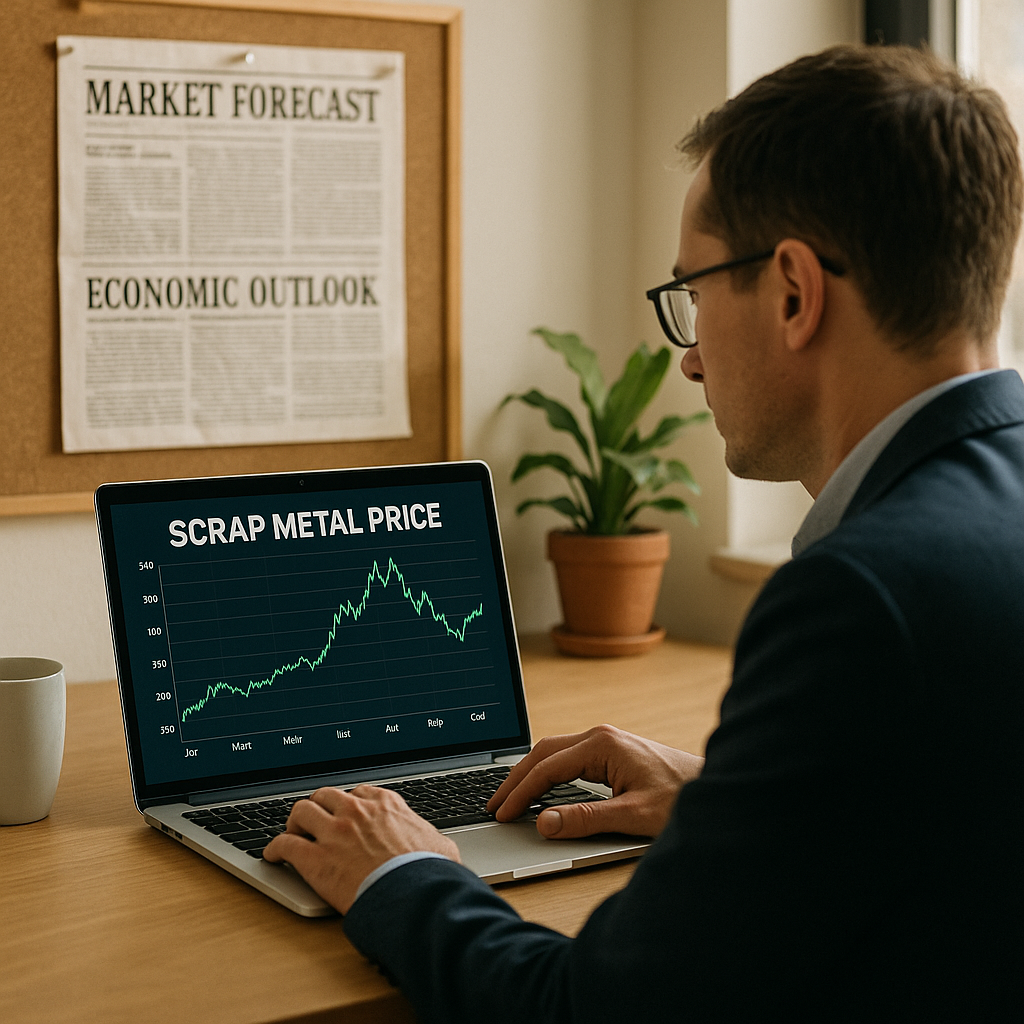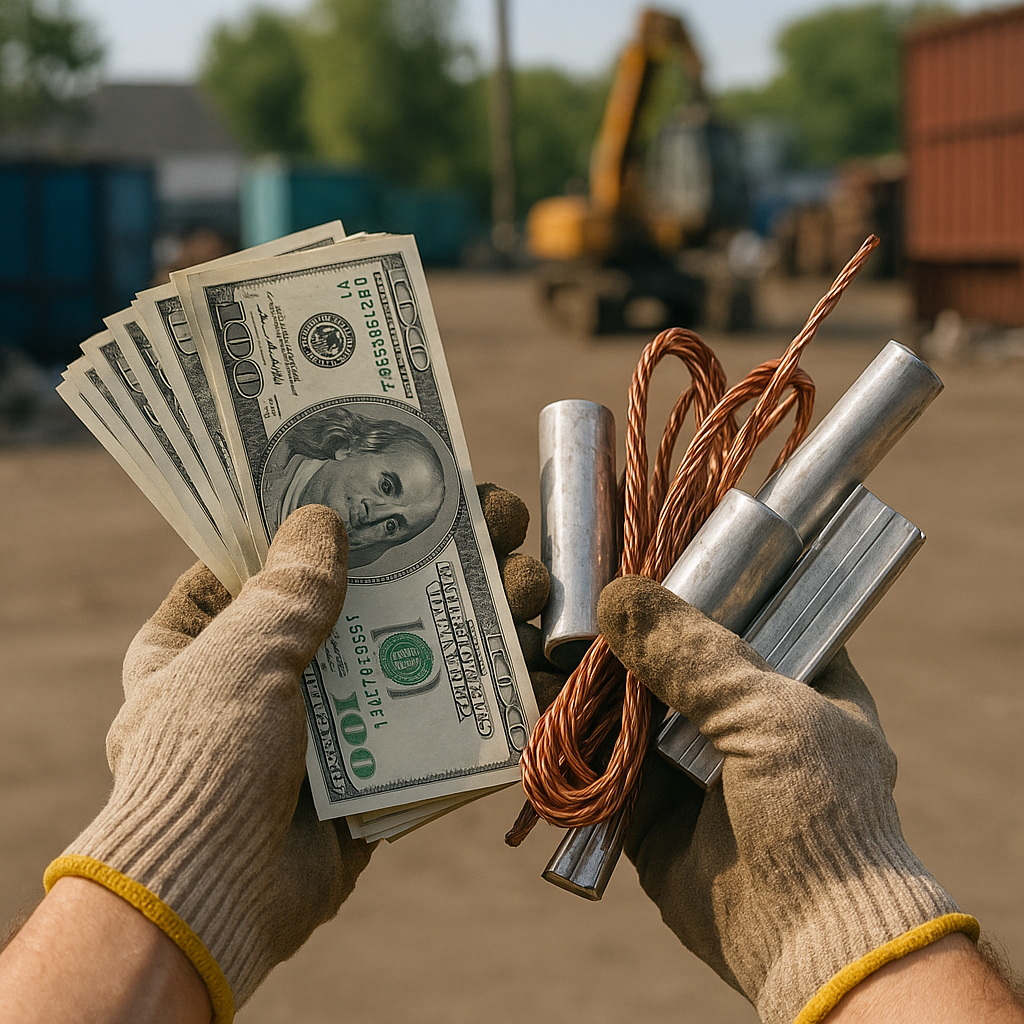5901 Botham Jean Blvd, Dallas, TX 75215
Current Scrap Metal Prices: Everything You Need to Know
June 27, 2025The scrap metal market operates in a constantly shifting environment where values change daily. Current market data shows steel scrap trading between $350 and $550 per ton globally as of 2023, with American sellers typically receiving 10 to 30 cents per pound. High-grade copper commands premium rates exceeding $3 per pound for clean, uncontaminated material. Aluminum scrap generally fetches between 25 and 50 cents per pound, depending on the alloy type and purity.
These price variations reflect the complex interplay of supply chains, manufacturing demand, and economic conditions worldwide. Regional recycling facilities often offer different rates based on local market dynamics and transportation costs. Metal quality significantly impacts value, with clean, sorted materials consistently earning higher prices than mixed or contaminated loads.
International trends also influence domestic scrap prices through import/export dynamics. Turkey, China, and the USA are major players in the global scrap market, with their purchasing patterns creating ripple effects throughout the industry. For recyclers, understanding these market fundamentals helps maximize returns when selling valuable metal assets.
What Factors Affect Scrap Metal Prices?

Supply and demand dynamics are fundamental to scrap metal pricing. Prices increase when industrial demand rises but material availability is limited. Conversely, prices tend to decrease during periods of oversupply or low demand. This economic principle applies to all types of metals.
Global economic conditions directly influence the scrap metal market. During economic growth, manufacturing and construction activities accelerate, boosting demand for raw materials. In downturns, industrial output typically declines, leading to lower scrap metal prices.
Government policies and global trade regulations significantly impact the market. Tariffs, sanctions, and trade agreements can restrict metal flows between countries. For instance, new tariffs imposed by a major metal-importing nation can disrupt supply chains and alter regional pricing structures.
Energy costs are crucial in determining scrap metal prices. The recycling process requires substantial energy for collection, processing, and transportation. When fuel and electricity prices rise, these increased operational costs often result in lower prices paid for scrap materials.
Currency exchange rates affect international scrap metal transactions. Since the global market typically operates in US dollars, currency fluctuations can make scrap metal imports more or less expensive for different countries. This effect creates regional price variations even with stable demand.
The electric vehicle revolution has dramatically shifted demand patterns for certain metals. As EV production accelerates globally, demand for copper, aluminum, and lithium has surged. A single electric vehicle contains about three times more copper than a conventional car. This shift represents one of the most significant market disruptions in recent years.
Technological advancements in recycling processes also influence pricing. New sorting technologies can extract more value from previously low-grade scrap, potentially increasing the supply of high-quality recycled materials. These innovations may gradually reshape pricing structures across different metal categories.
Seasonal factors create predictable market fluctuations. In many regions, construction activities typically increase during warmer months, boosting demand for structural metals. Understanding these cyclical patterns helps recyclers time their sales more strategically.
How Are Different Scrap Metals Priced?

The scrap metal market utilizes a detailed pricing system that varies significantly between metal types. Non-ferrous metals like copper and aluminum typically have higher prices compared to ferrous metals such as iron and steel. This difference arises from factors like metal scarcity, reprocessing costs, and market demand.
Copper consistently ranks among the most valuable scrap metals, with bare bright copper wire currently priced at around $3.40 per pound. This reflects copper’s excellent conductivity and widespread use in electrical applications. In contrast, steel might only bring $0.05-$0.08 per pound, emphasizing the substantial price gap between metal categories.
The form and purity of the metal significantly impact its value. Clean copper tubing without contaminants can bring in approximately $3.00 per pound, whereas copper mixed with other materials might only be worth $2.60 per pound. This price difference highlights the importance of proper metal separation and preparation for recycling.
Within the same metal category, prices can vary based on grade and form. Aluminum cans might fetch $0.45-$0.55 per pound, while cast aluminum typically earns about $0.40-$0.50 per pound. Extruded aluminum commands higher rates at about $0.60 per pound due to its purity and ease of processing.
Brass and bronze, copper alloys, maintain relatively high values in the scrap market. Yellow brass typically brings $1.90-$2.10 per pound, while red brass, with higher copper content, can fetch $2.30-$2.50 per pound. These differences reflect the varying copper percentages in different brass types.
Stainless steel holds greater value than regular steel due to its nickel and chromium content. Non-magnetic stainless steel (300 series) typically brings $0.30-$0.35 per pound, while magnetic varieties (400 series) fetch significantly less at around $0.05 per pound.
Electronics scrap represents a unique category with widely varying values. Circuit boards can contain precious metals like gold, silver, and palladium, making high-grade electronics quite valuable. Computer motherboards might bring $1.50-$1.70 per pound, while CPU chips can command over $3.00 per pound due to their gold content.
Market volatility also affects scrap metal prices. Global economic conditions, industrial demand, and international trade policies can cause metal values to fluctuate. The metal recycling industry closely monitors these trends, adjusting prices based on current demand and availability.
Processing requirements also influence pricing. Metals requiring extensive cleaning, separation, or decontamination before recycling typically bring lower prices. For example, insulated copper wire is worth substantially less than bare bright copper due to the extra processing needed to remove the insulation.
The location where you sell your scrap influences pricing. Urban recycling facilities typically offer higher rates than rural locations due to reduced transportation costs to processing centers. Additionally, larger quantities of scrap metal usually command better prices, as facilities can process bulk materials more efficiently.
Reflecting on 2024: Metal Markets Set the Stage for Strategic Shifts in 2025

The metal markets in 2024 unfolded with varied trajectories across key materials, driven by evolving supply-demand dynamics. Retrospective analysis from leading industry sources highlights how price movements and production trends in 2024 are shaping expectations for 2025 and the years ahead.
Aluminum: Supply Constraints Set the Stage for Continued Price Pressure
Aluminum markets showed strong upward momentum in 2024. S&P Global Ratings reported prices averaging $2,300 per metric ton, with projections increasing to $2,400 in 2025 and $2,500 in 2026. The persistent climb reflects tight supply conditions coupled with growing industrial demand.
Goldman Sachs offered a more aggressive outlook, having warned of significant inventory shortages during 2024. The bank’s analysts projected prices could spike to $4,500 per metric ton in 2024 and potentially reach $5,000 in 2025, citing surging demand from the renewable energy sector and electric vehicle production.
Copper: 2024 Surplus Casts Shadow Over Short-Term Prices
Copper, meanwhile, experienced a shift from balance to surplus. After a relatively stable 2023, the International Copper Study Group reported a pronounced oversupply in 2024.
Despite S&P Global raising its 2024 copper price estimate to $9,000 per metric ton, the market reacted to surplus fears, with prices sliding 21% from a March high of $10,730 to approximately $8,450 per metric ton by year-end. Longer-term, the outlook remains strong. Copper’s role in electrification supports sustained demand growth.
Chinese market research firm Antaike reaffirmed this, forecasting that China’s copper demand will peak around 2030, though annual growth is expected to slow to 1.1% from 2025–2030, down from 3.9% in the preceding five years.
Gold and Steel: Mixed Momentum
Gold saw meaningful gains in 2024, with S&P Global revising its price estimate upward to $2,100 per ounce. However, expectations moderate in the near term, with forecasts of $2,000 in 2025 and $1,700 by 2026.
The 2024 spike was largely attributed to heightened geopolitical tensions and sustained central bank buying, especially across Asia. Steel markets posted modest growth, with global production rising by 1.3% in 2024—up from just 0.2% in 2023. Growth was largely driven by India, Europe, and North America, while China continued scaling back output in line with its decarbonization goals.
The Energy Transition’s Lasting Impact on Metal Demand
The acceleration of the global energy transition remained a dominant theme in 2024, deeply influencing metal demand patterns. Copper and aluminum, in particular, benefited from expanding renewable infrastructure and electric vehicle manufacturing.
By year-end 2024, copper consumption from EVs and renewables reached an estimated 3.1 million tons—equivalent to 26% of total global copper demand, up sharply from 15% in 2023. This structural demand shift is uneven across the sector. While fossil fuel demand continues to wane, metals essential to clean energy technologies are experiencing sustained upward pressure. Oxford Economics projected that structural demand for copper and aluminum will continue rising into the late 2020s, keeping prices elevated even amid short-term volatility.
Unlike oil and coal, metal prices remain acutely responsive to China’s green energy push. China’s outsized role in global metals consumption—and its aggressive investment in renewables—make it a key driver of price sensitivity across global metal markets.
Looking Ahead: 2025 and Beyond
Analysts agree that while 2024 brought price swings and shifting inventories, the fundamentals for metals tied to electrification and the energy transition remain strong. As supply constraints persist and demand for green infrastructure accelerates, 2025 is poised to carry forward the momentum set in motion over the past year.
How Can You Get the Best Prices for Your Scrap Metal?

The recycling journey doesn’t end with collection. Getting the best value for your scrap metal requires strategy and knowledge. The difference between accepting the first offer and maximizing your returns can be substantial. Metal prices fluctuate based on market conditions, making it essential to understand the selling process.
To get the most money for your scrap metal, start by separating different metal types. Clean copper can bring $3-4 per pound, while contaminated copper might fetch only $1-2 per pound. This simple sorting step can potentially double your earnings. Remove non-metal attachments, clean off dirt, and organize metals by type before heading to the scrap yard.
Research current market prices using online resources or apps that track scrap metal values. Call multiple recycling facilities to compare their offers, as prices can vary significantly between yards. Many scrap dealers offer better rates early in the month when trying to meet quotas. Consider timing your sales strategically, as prices often increase during winter months due to higher demand.
For those with substantial quantities, remember that volume matters. Recycling centers typically offer premium prices for larger loads. Building relationships with local scrap yard owners can lead to better rates and valuable insider information about price trends. Don’t overlook online marketplaces as potential selling platforms for specialty metals that might command higher prices from specific buyers.
Final Words
Getting the best price for your scrap metal involves preparation, research, and relationship-building. By applying these strategies, you can significantly increase the value of your recycling efforts.
For professional recycling solutions that maximize your returns while supporting environmental sustainability, contact Okon Recycling at 214-717-4083.
